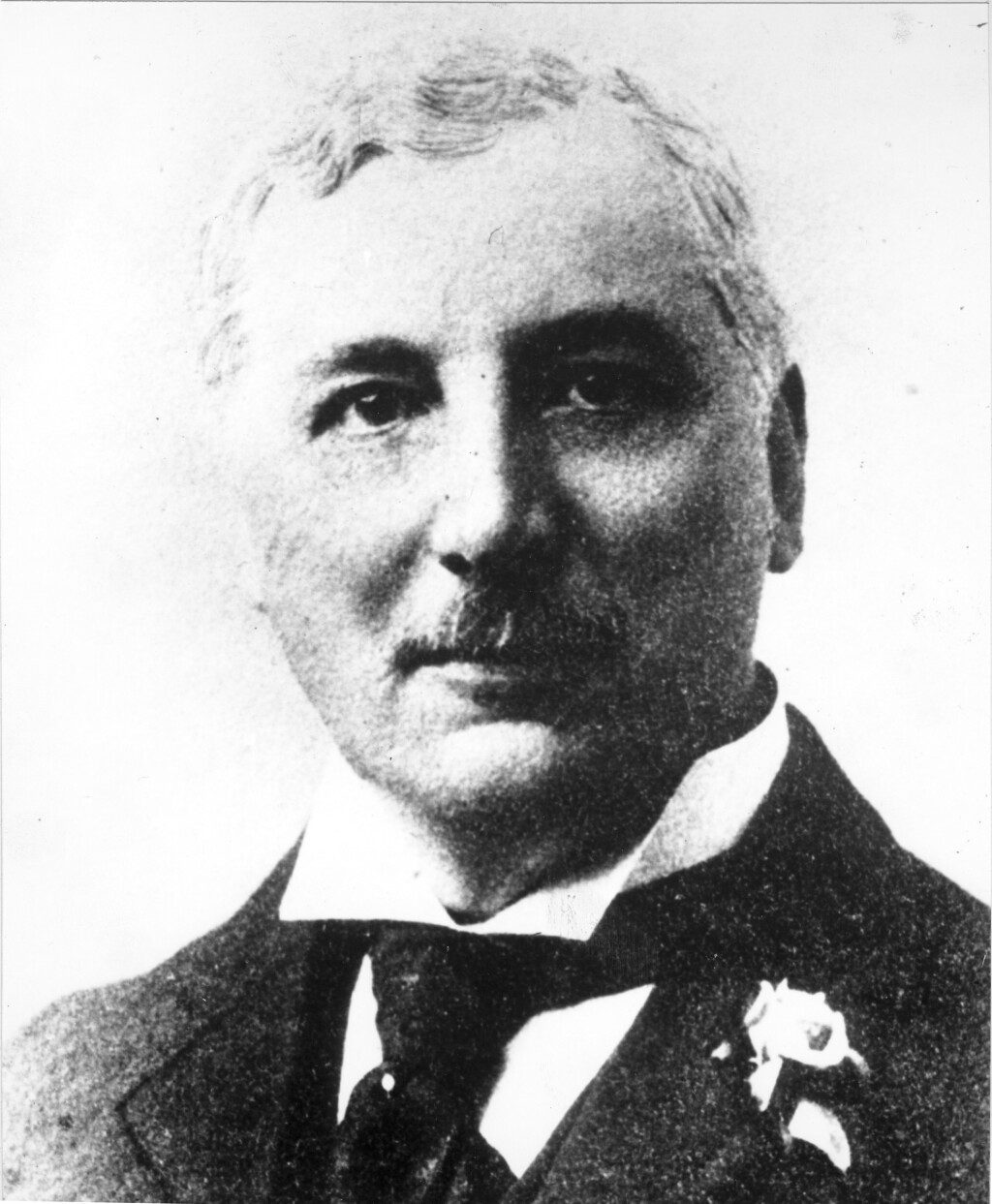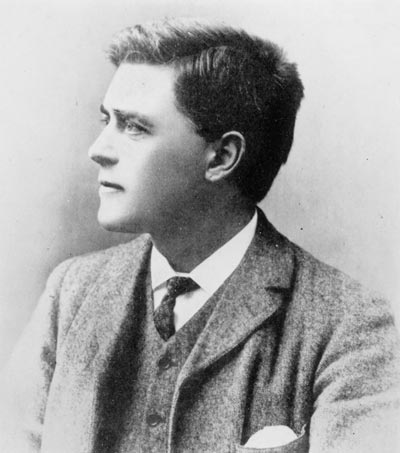The Melvill-Tomlin Collection
(Saesneg yn unig)
The bulk of the Melvill-Tomlin collection was amassed during the "abundant years of conchology" (Dance, 1986) from 1865-1914. It was expanded after this time by Tomlin, one of the few men still able to purchase and acquire material privately. James Cosmo Melvill and John Read le Brockton Tomlin were both not only wealthy enough to purchase shells but were capable taxonomists highly active in their field, publishing some 400 papers between them. This combination enabled collecting both through dealers and by exchange with a multitude of amateur and professional colleagues.
Type, figured and cited material
To date we have recognised over 3300 lots of Type, figured or cited material in the Melvill-Tomlin collection. We estimate that the total for the collection will be between 5000 and 10,000 lots. Within the databased material types have often been recognised, but there is still the possibility of finding more. If, for example, you have not located Sowerby or Reeve types in London, please check with us, as it may be in the Cardiff collections.
J. C. Melvill (1845-1929)

James Cosmo Melvill (1845-1929)
Melvill started collecting by purchasing specimens at auction, notably at Stevens sales in London. He continued this practice throughout his life and from his own annotated catalogues he is known to have attended 56 sales including those of Dennison (1865), Norris (1873, 1874) and J. Lombe Taylor (1880). Melvill's career as a taxonomist reached its peak during the 1890s and 1900s, by which time he had brought together a collection of some 22,500 species which at that time was about half the known species. Melvill's publications concerned Mollusca from diverse geographical locations and of note are the following:
- Lifu - with R. Standen, 1895-1897
- Madras - (J. R. Henderson Expedition) with R. Standen, 1898
- Torres Straits - (A. J. Haddon Expedition) with R. Standen, 1898
- Andaman Islands - with E. R. Sykes, 1897-1899
- Antarctica - (Scottish National Antarctic Expedition "Scotia") with R. Standen, 1907-1912
- Persian Gulf/Gulf of Oman - (ex-Abercrombie and Townsend) with R. Standen describing 610 new species
- South Africa - with J. H. Ponsonby, 1899-1909
Melvill Types
Although Melvill deposited syntypes of most of his new species in the British Museum (Natural History) and the Royal Scottish Museum, he retained a good series for himself including much type material.
J. R. le B. Tomlin (1864-1954)

John Read le Brockton Tomlin (1864-1954)
During the latter part of his career Melvill became acquainted with Tomlin, an equally enthusiastic collector. Tomlin's interest in conchology seems to have started early through his fascination for natural history. This became channelled into the study of conchology and entomology (Coleoptera), and, as with Melvill, Tomlin commenced purchasing from sales and dealers. After the First World War acquiring material became difficult but Tomlin was one of the few private collectors to continue. In 1919 he did this in style by purchasing Melvill's entire collection for 1,350. Also at this time Tomlin had become a recognised authority on the subject and was able to acquire a large amount of material through exchange. Perhaps it should be noted that both men were honorary curators of the British Museum (Natural History) and this influence may also have played a role in acquiring material. Probably Tomlin's early association with the National Museum of Wales, through the then Director, W. E. Hoyle, led to his bequest and, by the 1940s he had already started to transfer his collection. It has been estimated (Dance, 1971) that the bequest totalled over one million specimens and represented over 30,000 species. Tomlin's malacological library was also bequeathed and this consisted of some 2,200 bound volumes and over 7,000 reprints or pamphlets.
Significance
The significance of the Melvill-Tomlin collection is threefold. Firstly, due to the amount of taxonomically important material, secondly due to the historical data contained within and thirdly as a world wide reference collection.
The majority of the taxonomically significant material is associated with the papers written by Melvill and Tomlin. There is also a small amount of early mid-nineteenth century material present, described, for example, by L. Reeve and G. B. Sowerby acquired through sales. Some significant material was acquired through dealers, especially H. B. Preston who seems to have sold many of his so-called types to Tomlin. A considerable amount of syntype and paratype material has been acquired through exchange. "Challenger" and "Investigator" types are present, presumably via E. A. Smith and R. B. Watson. Other sources include C. Hedley, A. W. B. Powell and W. H. Dall. Other than type material, there are numerous series of species from authors who specialised on specific groups such as the Pectinidae of A. Bavay.
The historical significance of the collection is considerable and is primarily based on the vast range of sources through which both Melvill and Tomlin acquired their specimens. Tomlin was especially interested in historical conchology and there is much manuscript material consisting mainly of letters from conchologists, shell sale catalogues and numerous annotations to his library. The source list compiled so far is very incomplete as it is based on the findings of the curation of only part of the collection. The sources can be broadly divided into four categories as follows:-
Expeditions
The expedition material includes that where Melvill undertook to describe the molluscs - the Scottish National Antarctic (W. S. Bruce), the Percy Sladen Trust (Stanley Gardiner) and Torres Straits (A. C. Haddon). There is also material from "Challenger", "Discovery I" (ex E. A. Smith), "Discovery II" (ex A. W. B. Powell), H. M. S. Sylvia" (Captain St. John), "Terra Nova", "Norwegian North Atlantic Expedition", "Investigator", "St. George" (Hornell) and "Porcupine". Foreign expeditions are also represented in the Danish Expedition to Siam (via H. Lynge), "Siboga Expedition", "Princess Alice" and "Travailleur", "Spitsbergen Expedition" (via Torrell or Odhner) and "Albatross" (via Dall). See the Expeditions section in Collection sources for a full list.
Sales
Much material was purchased at sales, mostly Stevens in London. More detailed information is contained in A History of Shell Collecting by S. P. Dance, 1986. The material includes shells from the collections of C. Bulow (sold 1913), J. C. Cox (sold 1905), Damon (sold 1910 and 1929), G. and H. Nevill (sold 1904), Lombe Taylor (sold 1880 and 1929), J. J. MacAndrew and Sir David Barclay (sold 1891 and 1898). These collections themselves contained material from other notable collections such as Dennison, Tankerville and Stainforth.
Dealers
The third type of material was purchased from dealers such as Sowerby and Fulton, Paul Geret in France and H. B. Preston. The latter's material contained many syntypes especially from Antarctica and India from such people as Bennet and Annandale. Sowerby and Fulton's material contained specimens from many different sources such as Hungerford and Prevost. Geret handled Bavay, Caziot and Ancey material.
Exchanges
The fourth type of material is from collectors, both amateur and professional colleagues in museums. The collectors lived and collected all over the world and included W. J. Eyerdam (Alaska), Pedro de Mesa (Philippines), Louis Dubois (Argentina), J. Viader (Mauritius), Yoichiro Hirase (Japan), William H. Turton (South Africa and St. Helena), Harold C. Winckworth via R. Winckworth (Indian Ocean), Despott (Malta), Adele B. Koto (U.S.A.), F. G. Pearcey (Great Britain), Sam Archer (Singapore), Miss McKinnon Wood (Kenya), A. H. Peile (mainly Bermuda), Richard T. Lowe and Boog Watson (Madeira), A. M. Norman and Monterosato (Mediterranean). The Melvill-Tomlin collection also contains the Marshall collection of British Mollusca. There was also much exchange between professional colleagues. In the United States there was William H. Dall, Frederick Baker and H. Hemphill, Herbert N. Lowe, T. van Hyning, I. S. Oldroyd, Charles Orcutt, Henry Pilsbury and Lorenzo Yates. In Australia there was Charles Hedley, Tate, W. Lewis May, C. J. Gabriel, Tom Iredale, W. R. P. Oliver, Roy Bell and William T. Bednall. New Zealand contacts included A. W. B. Powell, Bucknill and Drier. Material from South Africa came from Barnard, the University of Cape Town Ecological Survey (via T. A. Stephenson), H. J. Puzey, W. Falcon and the Natal Museum. In Sweden there was N. Odhner and 0. Torrell; Iceland, G. G. Bardarson and Denmark, H. Lynge. Tweedie from the Raffles Museum sent material from Singapore and Christmas Island. Edouard Lamy, Etienne Locard, Jousseame and Paul Pallary contributed Mediterranean and North East Atlantic material.
For more information on the sources that Melvill and Tomlin used to acquire material please go to the Collection sources section. See also One collection - 786,000 shells - Cataloguing and curating the Melvill-Tomlin shell collection